
The killing of Yahya Sinwar in Gaza, as many observers have suggested, may impact on the continuation, or a possible cessation of the conflict in Gaza. Some like Tom Friedman of the NewYork Times, and other commentators have even suggested that it could have possibilities beyond just the Gaza conflict. But all this rightly raises again the influence – and dare I say the leadership – of the United States. This question of US leadership brings attention not just to Israel and the region but beyond and raises real questions of US leadership with the global order.
On the Middle East front the US has expressed strongly its belief that it is time to end the war. As David Sanger of the NYTimes suggested in his analysis of the current state of relations:
Within hours of the death of the Hamas leader Yahya Sinwar on Thursday, President Biden and his aides scrambled to design one last push for a broad de-escalation of violence in the Middle East: a cease-fire and hostage deal in Gaza, a pullback from Israeli attacks on Hezbollah in Lebanon, a confident declaration of victory by Israel that might allow it to forgo a major retaliation against Iran.
It is time for this war to end,” Mr. Biden said as he emerged from Air Force One when it landed outside Berlin late Thursday. He added that he had called Prime Minister Benjamin Netanyahu of Israel and urged him to “move on” from the war and focus on building a new political landscape for the region.
Tom Friedman elaborated on what was required beyond just a ceasefire, if the cessation is to have a real impact on international stability:
The broad idea is for the Palestinian Authority president, Mahmoud Abbas, to agree to appoint the economist and former P.A. prime minister Salam Fayyad — or someone of his sterling reputation for incorruptibility — as the new Palestinian prime minister to lead a new technocratic cabinet and reform the Palestinian Authority, root out corruption and upgrade its governance and security forces.
Such a reformed Palestinian Authority would then formally ask for — and participate in — an international peacekeeping force that would include troops from the U.A.E., Egypt, possibly other Arab states and maybe even European nations. This force would be phased in to replace the Israeli military in Gaza. The Palestinian Authority would then be responsible for rebuilding Gaza with relief funds provided by Saudi Arabia, the U.A.E. and other Arab Gulf states, Europeans and most likely the U.S.
A reformed Palestinian Authority, with massive Arab and international funds, would attempt to restore its credibility in Gaza, and the credibility of its core Fatah organization in Palestinian politics — and sideline the remnants of Hamas.
The problem, at least immediately, however, is as David Sanger points out is that there is no interest by Prime Minister Netanyahu, it seems at this moment, to accept even a ceasefire let alone steps beyond:
Nothing in his face-offs with Mr. Netanyahu suggests that the Israeli prime minister will take his advice or seize the chance to turn the military victories into a lasting political accomplishment. One of Mr. Biden’s senior aides said the administration’s concern was that the killing of Mr. Sinwar, and before him the killing of the Hezbollah leader Hassan Nasrallah, ratifies in Mr. Netanyahu’s mind his certainty that he was right to deflect American calls for de-escalation over the past few months.
These observations seem to target the immediate difficulties that such a US plan envisages. But it is beyond that. The underlying question that is there, and ultimately more impactful, is the influence of the US in this situation but beyond it in other international arenas such as the Ukraine, the South China Sea and Taiwan. What is the capacity and policy chops of the US to influence and indeed to pressure allies and foes alike to accept outcomes that the US identifies as improving the state of relations and hopefully terminating conflict and stabilizing, or even possibly improving relations among the countries and more broadly the system?
As Ross Douthat of the NYT recently wrote in an article titled, “America needs a President”:
In neither case, though, does the world’s most powerful country seem to have a real handle on the situation, a plan that it’s executing or a clear means of setting and accomplishing its goals.
He further argues:
Scenarios where great powers end up led around by their allies and clients are not historically unusual. But it’s hard to escape the impression that America’s current difficulties are linked to a very specific problem: the vacuum at the heart of this presidency, the slow fade of Joe Biden from the normal execution of his duties, the general uncertainty about who is actually making decisions in U.S. foreign policy.
But it seems to me that a focus on the twilight of the Biden years as an explanation for US inability to shape conflict outcomes is a bit of a cop out. Rather as I see it, it seems to me that the US has come to a point where it is unwilling to fashion credible threats on friends and more importantly on foes. The key action mechanics of leadership – credible threats and equally credible assurances – are increasingly missing. As noted by Douthat:
Today’s restoration of deterrence could become tomorrow’s overreach or quagmire. For another, America has global responsibilities, not just regional ones, and a widening war in the Middle East could be bad for the American position in Asia and Eastern Europe no matter its outcome for the immediate participants. If the United States can’t exert real leverage over countries that it arms and supports, a weakening Pax Americana will end up hostage to too many interests not our own.
And that is the concern and the nub of the global order issue. And while there is a reflection, as noted above, that it is this President who has lost influence recently as he comes to the end of his Presidency, the weakness of America’s efforts extend beyond this, it appears to me.
The dilemma in my mind lies more with the rise of nationalist, even populist politics. We need not go to the most extreme versions of this populist view, as expressed by Donald Trump.The fact is it has spread to Democratic politics with Biden but it would appear with his advisers and to Democratic Presidential candidate, Vice President Harris as well. It can be seen most prominently with US trade policy. You need go no further than this administration’s determined effort to neuter the international trade dispute mechanism, the WTO. In addition, it extends to the growing willingness of US administrations, starting with Trump but infecting the Biden administration also to use tariffs, and increasingly so, as a trade policy. Michael Froman, currently President of the Council on Foreign Relations, and who served as the U.S. Trade Representative from 2013 to 2017 during the Obama Administration has examined current US trade policy:
For much of the last century, in response to the disastrous 1930 Smoot-Hawley tariffs, the United States’ international economic policy was focused on liberalization and integration. Competitiveness, efficiency, and growth were the metrics of success. This framework achieved many of its objectives, contributing to the biggest reduction in poverty in human history, opening vast new markets to U.S. exports, and greatly strengthening the comparative advantage of U.S. firms. At the same time, attention it paid to particularly vulnerable groups of workers and their communities. The advent of China as a strategic competitor further highlighted the limitations of that approach. The rules-based system was not designed to accommodate an economy that is so large and so integrated and yet is determined to follow a fundamentally different set of rules.
The result is the enlargement of protectionism signaled by National Security Adviser, Jake Sullivan:
April 2023, U.S. National Security Adviser Jake Sullivan delivered a critique of the neoliberal consensus that had served as the foundation for international economic policy for nearly a century. In a prominent speech, Sullivan suggested that the United States was moving on from an agenda of global integration and trade liberalization.
To protect Americans and to take on China, Sullivan contended, Washington would no longer shy away from raising tariffs, imposing restrictions on exports and foreign investment, and engaging in domestic industrial policy. It was an important speech for a number of reasons, not the least of which was that it was delivered by the national security adviser, not the treasury secretary, commerce secretary, or U.S. trade representative. …
Consistent with Sullivan’s framework, the Biden administration has embraced a range of economic tools: export controls, restrictions on inward and outbound foreign investment, tariffs, industrial policy, and antitrust enforcement. Many of these tools enjoy broad bipartisan support.
If they are to form the basis of a new, enduring Washington consensus, however, the next president—whether Trump or Kamala Harris—will need to develop a more systematic approach to using them. That means understanding their limitations, developing principles to guide their use, and grappling fully with the tradeoffs they involve.
But I am not heartened by this approach on trade, and the wider implications of a nationalist approach to policy well beyond trade policy. The direction of US leadership is troubling. We are only too aware of where it could go with Trump but the signals are not positive for a Harris administration either.
Image Credit: US Institute for Peace

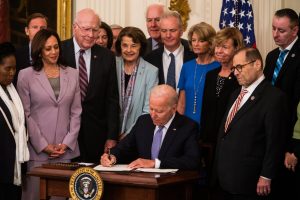

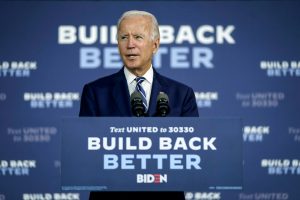
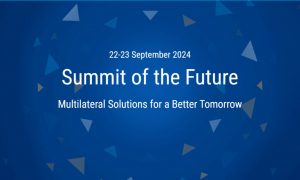 So, we are closing in on the consequential “
So, we are closing in on the consequential “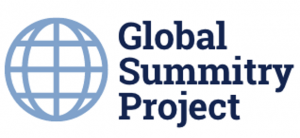 “Advancing global governance and human security for a better future”: A Symposium hosted by the Center for China and Globalization (CCG), America-China Public Affairs Institute (ACPAI) and the China-West Dialogue (CWD)
“Advancing global governance and human security for a better future”: A Symposium hosted by the Center for China and Globalization (CCG), America-China Public Affairs Institute (ACPAI) and the China-West Dialogue (CWD) 
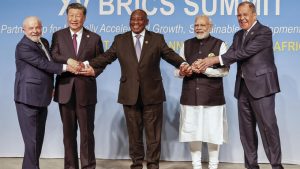
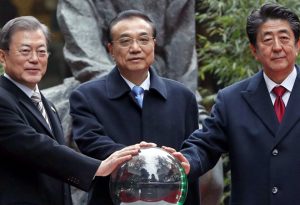 While I have suggested earlier that I don’t think an initial focus on building regional or multilateral institutions is necessarily the best first step in global governance and possibly a means to ‘tone down’ geopolitical competition rhetoric and action, I am now about to contradict myself and this position. For, in the end, there are some obvious regional and international institutions that could encourage collaborative action and push global governance collaboration. And, in fact, I have in mind an obvious one that has – as a current Chinese slang term might well describe it – ‘tang ping’ 躺平 – or ‘lying flat’. It is the Trilateral Summit.
While I have suggested earlier that I don’t think an initial focus on building regional or multilateral institutions is necessarily the best first step in global governance and possibly a means to ‘tone down’ geopolitical competition rhetoric and action, I am now about to contradict myself and this position. For, in the end, there are some obvious regional and international institutions that could encourage collaborative action and push global governance collaboration. And, in fact, I have in mind an obvious one that has – as a current Chinese slang term might well describe it – ‘tang ping’ 躺平 – or ‘lying flat’. It is the Trilateral Summit.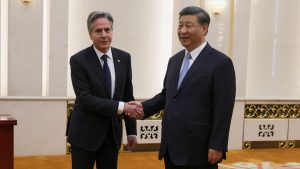 Current diplomatic activity, especially recent visits by senior U.S. officials to China underline the still difficult relations among the major powers. William Burns, the current CIA head, earlier this month described the more tense relations among the major states in international relations in the annual
Current diplomatic activity, especially recent visits by senior U.S. officials to China underline the still difficult relations among the major powers. William Burns, the current CIA head, earlier this month described the more tense relations among the major states in international relations in the annual